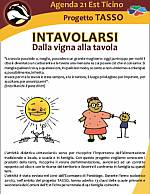Intavolarsi: from the vineyard to the
table - the food of the 5 senses
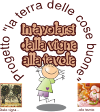
“Today, unfortunately, the food for
many has become a fuel and the table a shelf on which to
lay what you consume "
(Enzo Bianchi – “Il pane di ieri”)
The project is aimed at Intavolarsi
knowledge of the products of the land from cultivation to
consumption, the rediscovery of the cultural value of
food, the encounter / confrontation between generations,
the rapprochement of the boys to a proper relationship
with food and land resources .
the laboratories
2)
the vineyard
The
virtues of herbs: prepare a herbarium
To
stimulate the spirit of research and understand the
importance of team work.

The workshop consists of four phases: a theoretical part, a practice (during which he painted from life a medicinal plant), an in-depth individual and a final work in the classroom.
Guided
tour of breeding cows
Access based on the availability of the company.
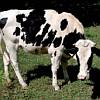 The laboratory
includes an exit teaching breeding of cows Parabiago and
requires the presence of the farmer who will explain how the
animals live and what are the jobs linked to the farm.
The laboratory
includes an exit teaching breeding of cows Parabiago and
requires the presence of the farmer who will explain how the
animals live and what are the jobs linked to the farm.
Guided
tour to bee breeding
Access based on the availability of the company.

The laboratory includes an exit teaching to bee Parabiago and requires the presence of the beekeeper who will explain how the animals live and what are their products.
Guided tour of the mill Starquà
Access based on the availability of the company.
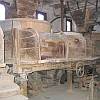
The laboratory provides an output to the mill teaching Staquà during which will be shown the history of the mill and you can see the old hall of milling and the blades on the River Olona. During the visit, the operator will give some information on the evolution and learning about the various types of mill.
The wine of Parabiago
Access based on the availability of the company.
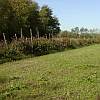 The
grapevine has always characterized the agricultural
landscape dell'Altomilanese and became one of the highlights
of the agricultural economy in the eighteenth and nineteenth
centuries. The quality of the wine produced is reported also
in the works of various writers including Carlo Porta.
The
grapevine has always characterized the agricultural
landscape dell'Altomilanese and became one of the highlights
of the agricultural economy in the eighteenth and nineteenth
centuries. The quality of the wine produced is reported also
in the works of various writers including Carlo Porta.
3)the
table
Eating with the Romans
Deepen
their knowledge of Roman civilization
 The evolution of
taste food from the origins of the Roman imperial age. The
production, processing and storage of food. The environments
of the triclinium and kitchen. The way you eat, the table,
the dishes. The funeral feast. Some recipes.
The evolution of
taste food from the origins of the Roman imperial age. The
production, processing and storage of food. The environments
of the triclinium and kitchen. The way you eat, the table,
the dishes. The funeral feast. Some recipes.
Eating
in the Middle Ages.
Deepen
their knowledge of medieval civilization
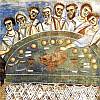 The Basics of
Nutrition. The production, processing and storage of food.
The power in the monasteries, the refectory and the kitchen
of the monks. The monastic hospitality. Changing tastes in
civil society. Tableware, utensils, crockery. Some recipes.
The Basics of
Nutrition. The production, processing and storage of food.
The power in the monasteries, the refectory and the kitchen
of the monks. The monastic hospitality. Changing tastes in
civil society. Tableware, utensils, crockery. Some recipes.
Eating
in the '700
A
better understanding of the century of the Maggiolini.
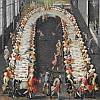 The board of the nobles.
Innovations in the production, processing and preservation
of food. The way you eat, the table, the dishes. The wedding
banquet. Dinner Christina of Brunswick. Some recipes.
The board of the nobles.
Innovations in the production, processing and preservation
of food. The way you eat, the table, the dishes. The wedding
banquet. Dinner Christina of Brunswick. Some recipes.
The
art at the table with Arcimboldo and Fields
Know
the products of the earth, bring the boys to a proper
relationship with food
 Will be
presented and discussed some paintings dell'Arcimboldo and
Vincenzo Campi, then, using fruits and vegetables, students
will compose their own "self".
Will be
presented and discussed some paintings dell'Arcimboldo and
Vincenzo Campi, then, using fruits and vegetables, students
will compose their own "self".
The
use of foodstuffs in the art
Learn
about the many foods used in the art
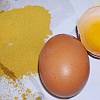 The
laboratory demonstrates the use of materials of common use
in food and which today can be found in our kitchens, in
the fine arts of the eighteenth century. Students will
prepare a color or two tablets made with plaster primer
and then decorated.
The
laboratory demonstrates the use of materials of common use
in food and which today can be found in our kitchens, in
the fine arts of the eighteenth century. Students will
prepare a color or two tablets made with plaster primer
and then decorated.
The
secret recipe
Familiarize
with the domestic preparation of food
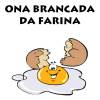 We collect the secret
recipes of our mothers and grandmothers and prepare together
what we like best.
We collect the secret
recipes of our mothers and grandmothers and prepare together
what we like best.
What
ingredients contains your snack
Discover
the ingredients that contain the favorite snacks
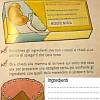
We will analyze the structure and elements of a label, will receive a card on which pupils pasted the label of their own snack, will stress the ingredients that do not know and ask a relative, which puts ingredients in snack homemade them compare with those of the commercial snack.
The
bread of Parabiago
Experience
the making of bread

Will analyze the various types of cereals and flour, the various types of yeast, the proportions of the mix as well as the steps and how lavorazione.Si proceeds to the mixture that is pushed up, each participant prepares and marks his loaf, finally you put everything in the oven.






